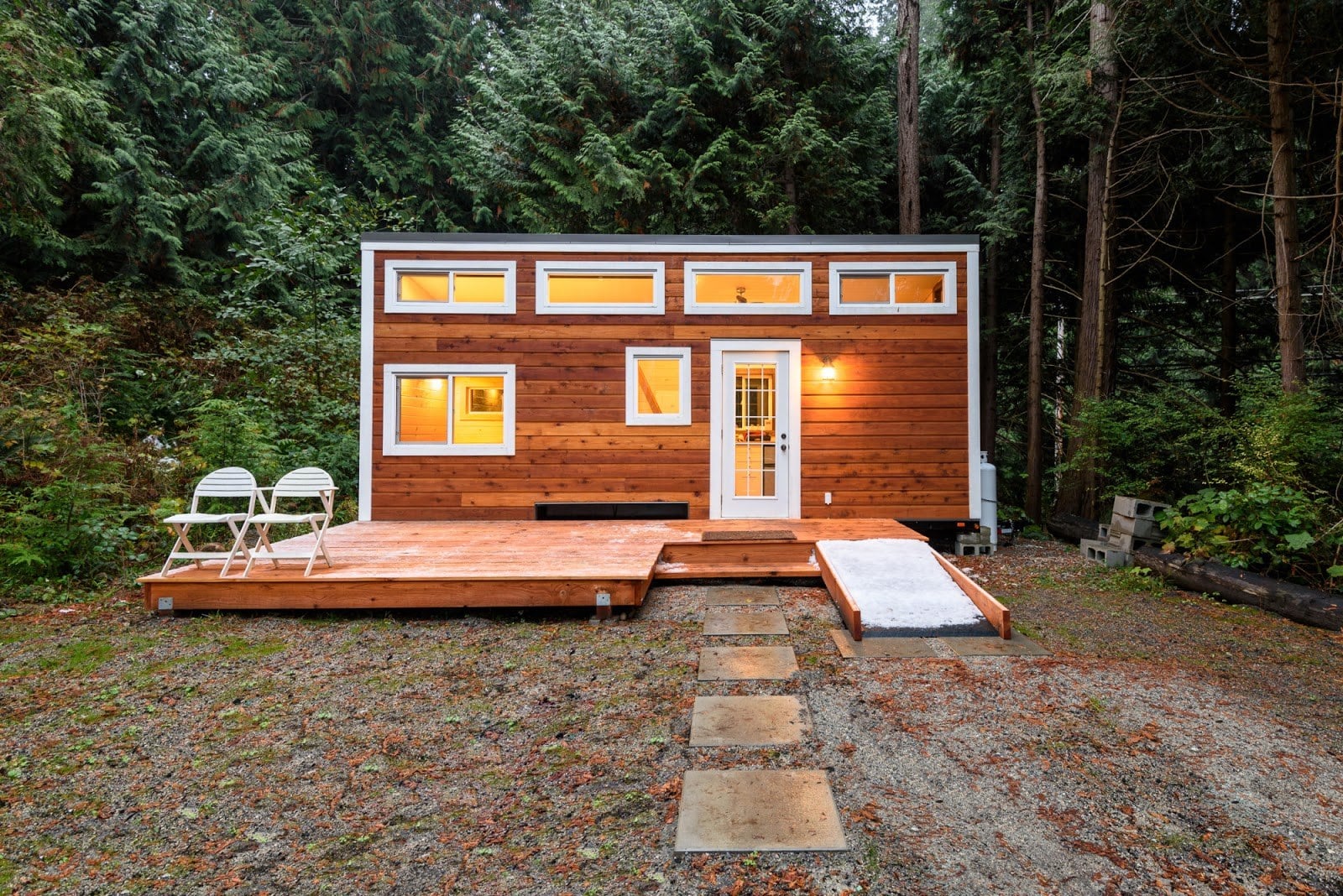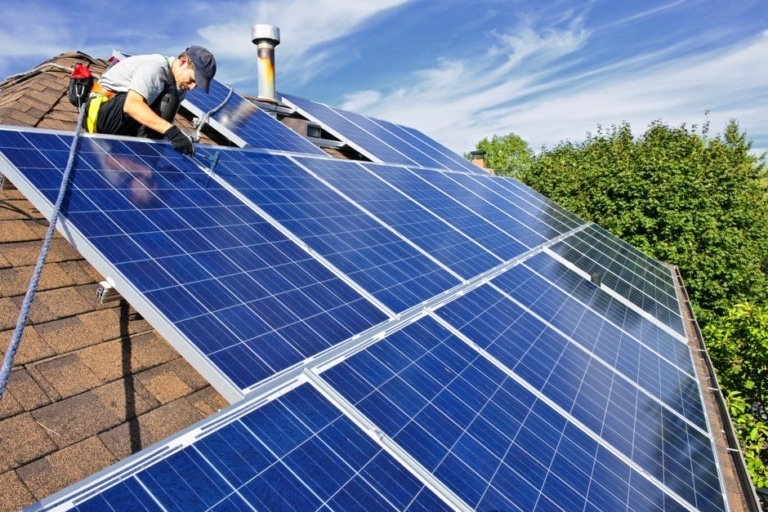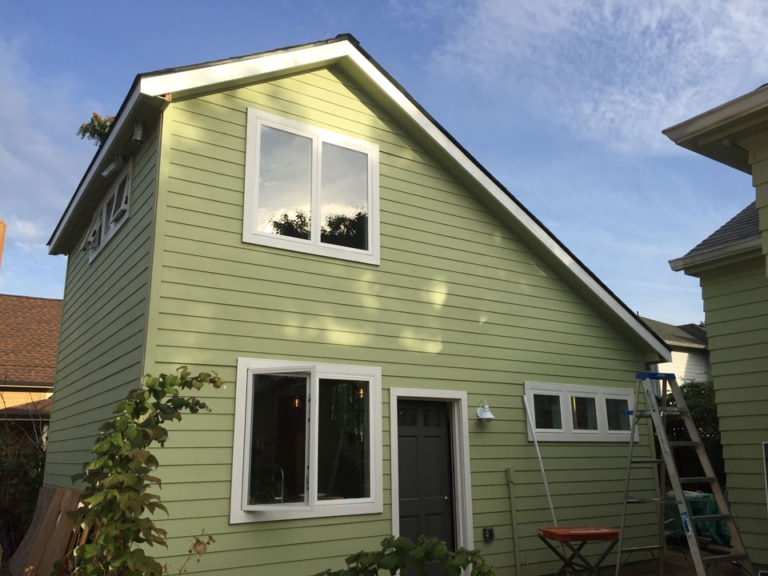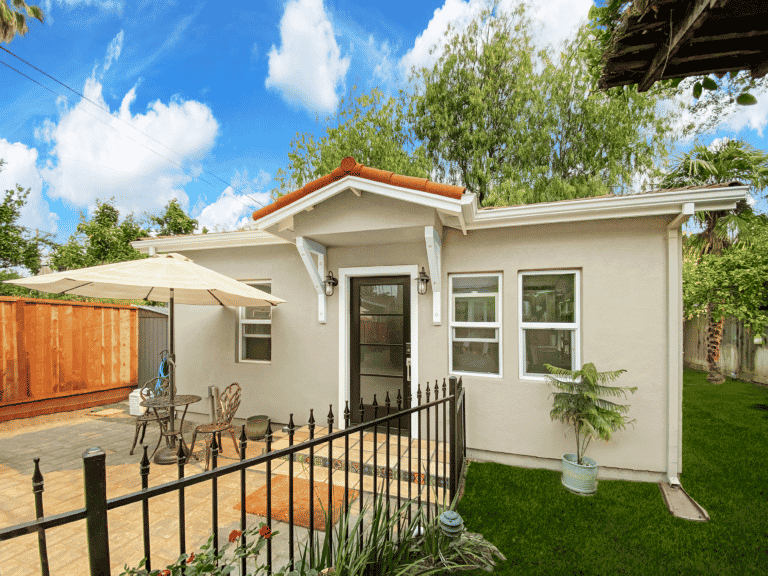Why Winter is the Perfect Time to Build Your ADU
As the old builder’s adage goes, if you can’t pour a foundation before winter, you shouldn’t do it until spring. And once upon a time, that was sound advice. Workers didn’t have the technology to build safely during the winter, from the construction itself to keeping workers warm. But then again, this is California.
Nowadays, homeowner fear of wintertime building persists, but technology has rendered that fear obsolete. Thanks to advances in construction technology, it’s not only possible to build during winter. In some cases, it’s actually the perfect choice–especially if you’re a homeowner looking to build an ADU in California
Here’s a closer look at why winter is the perfect time to build your ADU, things to keep in mind about winter construction, and what you can do to ensure a smooth building process.
Myths About Winter Construction
While our northern California winters aren’t nearly as brutal as a Midwest winter, we still get our fair share of nasty weather (Okay, maybe not nasty. But grumpy for sure). That’s enough to scare many homeowners away until spring, when in reality, they’re missing out on critical benefits of wintertime construction.
But before we talk about the benefits of winter building, we want to first address your worries. There are a few common fears we hear all the time–fears you probably have too, based in real concerns about the quality and soundness of your build.
The good news? Those fears are based in myth, though they do offer valuable teaching moments for those interested in a winter build.
Exposed Elements Wreak Havoc on Materials
The first myth has to do with Mother Nature’s winter gifts: dropping temperatures, snow, ice, and wind. As a homeowner, you know that materials have to sit out while workers handle them, and in the winter, you’re worried that the elements will have their way with the materials. You’re worried, for example, that cold will warp your wood.
In a perfect world, builders would only handle lumber on 72-degree days with low humidity and a bright, sunny sky. Sadly, that’s not the world we live in, and workers have to make the best of the circumstances.
Here’s the good news: because we don’t live in a perfect world, lumber mills have developed processes to counteract the inevitable bad weather. Their main concern is moisture, which is why ambient humidity is important.
When framing lumber arrives at a work site, it has already been kiln-dried to 19% moisture content. If wood dries out too much, it becomes brittle. If it’s too wet and the moisture doesn’t evaporate, you run the risk of rot.
During winter building, the humidity is significantly lower than in the spring or summer, since rainy days are infrequent. In this case, builders don’t have to worry about drying out the wood. Plus, homes under construction in winter must be heated for workers, which helps keep framing wood dry.
Snow is a concern, but not as much as rain. Snow is semi-solid water, which means as long as you clear it off your lumber before it melts, your lumber is perfectly fine.
Additives Weaken Concrete
Another wildly common concern has to do with concrete, specifically winter adjustments to concrete.
Concrete must be cured in order to reach maximum strength (in plain English, it has to set). This is more challenging in colder months because concrete must be protected from freezing for at least the first 24 hours, or until it reaches a strength of 500 pounds per square inch. Otherwise, it will lose much of its early strength.
This means workers must take a variety of preventative measures to ensure concrete cures properly in cold weather. Many homeowners worry that the additives put in concrete weaken the concrete overall.
We’re here to say that as long as you take the right preventative measures, there’s no good reason to avoid pouring concrete in cold weather. Additives don’t weaken the concrete at all. If anything, concrete poured in cold weather can actually be stronger than concrete poured in warmer months since it has a longer curing time.
Workmanship Suffers
When you build an ADU, you’re not building a backyard shed. You’re building a family home, and you want it to be a place your family can feel at home. And where your loved ones are concerned, that means nothing less than the best workmanship you can afford.
Many homeowners worry that cold weather will negatively impact workmanship, leaving your loved ones with a subpar residence. We’re here to tell you that’s simply not true (or shouldn’t be if you’ve hired the right company).
It is true that working conditions change when the weather cools off. However, builders are used to working in any conditions–that’s simply the nature of their jobs. More importantly, no builder worth their salt would dream of giving their customers subpar quality, no matter the circumstances. Rain or shine, cold or hot, quality matters above all else.
A good builder will not only maintain the same level of quality, but go out of their way to demonstrate how they’re ensuring workmanship is as good as (or better than) workmanship you would get any other time of year. That’s just good business. Any builder whose workmanship suffers in winter simply is not a good builder.
Higher Pricing
Finally, many homeowners are concerned about wintertime pricing. Between weather conditions and adjustments for Mother Nature, homeowners often worry that wintertime building will drive their construction costs up.
To be clear, there are certain costs during the winter that you wouldn’t otherwise face. However, compared to the overall cost of the project, these are insignificant.
In addition, keep in mind that many homeowners don’t want to embark on construction during winter, which means that builders are far more available in the cold months. From a homeowner’s perspective, this is fantastic news.
Decreased demand means you don’t need to compete with other homeowners. Unlike the summer months, when everyone is doing projects and builders can charge more due to high demand, the colder months mean you’ll likely have a lower project rate overall. Which means that winter is actually the perfect time for a cost-conscious homeowner to build an ADU.
Why Winter is the Perfect Time to Build Your ADU
As you can see, many common wintertime building fears have a reasonable point, but most of them have no basis in fact. With that in mind, let’s talk about the other side–why winter is the perfect time to build your ADU. As homeowners are learning, winter is a great fit for many families to start their building projects.
To be clear, winter building isn’t all sunshine and flowers. No time of year is completely perfect. However, you shouldn’t rule out winter simply because of the season itself, and there are plenty of excellent reasons why winter construction is actually a fantastic idea.
Snow is Better Than Rain
You don’t need to be a child building a snowman to appreciate the magic of snow. And while no precipitation is ideal for construction, snow is actually preferable to rain. Not that we get a lot in California!
When builders are working on a project, one of their main concerns is moisture, which is why a lack of precipitation is preferable. However, if precipitation is unavoidable, it’s better to deal with snow than rain. This is for one simple reason: you can brush snow off.
The concern with precipitation isn’t the precipitation itself, but rather giving it a chance to soak into the materials, at which point workers have to dry out the materials before they’re usable. Snow can be brushed off before it has a chance to melt and soak in, which makes it far easier to deal with than rain.
Obviously, workers would prefer not to have materials come in contact with snow at all, and they’ll take precautions to make sure that doesn’t happen. But if it does happen, it’s an easier problem to address than rain.
More Availability
Most homeowners don’t want to build in winter, right? That’s fantastic news for homeowners like you who know that building an ADU in winter is actually a good idea.
Builders work all year on multiple projects at once. They structure their work processes with this reality in mind. However, every builder has a limited capacity and availability, between available workers, supplies, and the timelines of overlapping projects. In summer and fall, you’ll often hear about construction companies scrambling for a workforce.
In high-volume building times, this means two things. First, builders can charge more, since their services (and other related services) are in high demand. Second, you’ll have to compete with other homeowners.
During the winter, when demand is lower, builders have far more availability, which means that a smart homeowner can take advantage of their increased availability.
Shorter Build Times
Increased availability has several advantages for homeowners. One of the biggest advantages is decreased building times.
For one thing, the volume of ADUs (and homes in general) under construction in the winter is much lower than other times of year. This means your builder has considerably more resources to dedicate to your project. The professionals involved don’t have to shuffle between projects.
Instead, they can spend more time focused on your project, which translates to shorter, more efficient build times.
More Personal Attention
The other benefit of increased availability is the level of personal attention your project receives.
A high-quality builder will do their best to provide personal attention no matter what, but the reality is that in busy times when resources are thin, they won’t be able to spend as much time with you. In the winter, when builders have fewer projects, they can spend more time focused on your project alone.
For homeowners, that means you can spend more time with your builder, get more individual attention, and get a more personal touch throughout your construction process.
Easier to Get a Permit
Limited interest in winter construction has a few unexpected benefits for homeowners: in the winter, it’s actually easier to get a permit than other times of year.
This has to do with demand. You need a permit in order to begin construction, which means that the more people there are trying to build, the higher the demand for permits. In other words, the more permit applications waiting in line in front of you.
In the winter, you can sidestep much of the wait time simply because there aren’t many other homeowners filing for permits at the same time. You’ll see the difference even in cities that have taken steps to dramatically reduce the permit wait time for ADUs. Though it should be noted that COVID-19 has definitely had an impact on permits and building ADUs in northern california.
Much of the Work Can Still Be Done Indoors
While you spend a lot of time and attention on the bones of a structure, there’s still plenty of work to be done indoors.
Here’s the good news: once the bones are up, all the work shifts indoors, which is actually perfect for the wintertime. As long as you take the right preemptive measures when laying down the bones of your ADU, the indoor work is exactly the same as it would be any other time of year.
A Shorter Wait for a Family Home
However, while all of the above benefits are fantastic incentives for a winter build, there’s one benefit that beats all the rest.
When you build in the winter, you have a shorter wait for a family home.
At the end of the day, your ADU project is a family housing project, focused on bringing your whole family closer together. In the winter, you have greater access to your workers, reduced wait time for key milestones, and an overall expedited process, all of which means that you get to build a family home faster.
Which means that instead of waiting for spring, you have a few more months to focus on what matters most.
Getting Creative in Winter
Does winter sound like the right fit for your ADU project? For the right homeowner, it can be a great season to build your family home.
That said, there are seasonal considerations you have to account for in winter. Just like you would account for the sun and heat in the summertime, you have to account for the cold in winter.
Here are a few things to keep in mind in winter.
Make Backup Plans for Mother Nature
First and foremost, you have to make backup plans for Mother Nature.
Because the cool weather is your biggest risk and your biggest wild card, you have to plan as if the weather won’t cooperate. That way, you won’t be caught off guard and pushed behind schedule.
That means checking the weather in advance, planning what work you can do based on the weather forecast, and making backup plans in case the forecast misses the mark. Your workers should come equipped for the elements in case of unexpected weather so that your materials don’t get damaged.
Ideally, you should try to finish as much outdoor work as you can before the weather gets truly frightful. That way, your builder can shift to indoor work that won’t be held up in bad weather.
Make Sure Heat and Water Lines are Durable
Regardless of Mother Nature’s whim, your heat and water lines should be ready to hold their own. If you’re building in the cold, that means finding the most durable materials you can afford.
It might feel like a bit of an investment, but keep in mind that buying durable materials now will ensure your pipes withstand the weather in the future. Winter will feel more or less the same each year, so if your pipes can hold up to the elements now, they’ll do well as they age.
Plan During The Cold Weather
Part of planning for the weather involves making a choice early on. One way or another, the unpredictable winter weather means you’ll have fewer delays once you shift to indoor work. Ideally, you should try to shift indoors sooner rather than later.
This is when your early building decisions make a huge difference.
The sooner you finish laying the bones of your ADU and put up the exterior, the sooner you can commence indoor work.
Before you start the process, sit down with the whole family (especially the future resident of your ADU!) and have a discussion about what features are most important. This will make it easier to decide if a custom ADU is the right fit.
Plan with the Builder in Advance
Above all, make sure to plan with your builder in advance.
Regardless of the time of year, your builder is your foremost asset in this process. They know the ADU process and can guide you through every step. They know about zoning and building requirements, permit rules, changes to ADU laws, and more.
If you want to build in winter, you’re going to need to account for a lot of details, which means you need a significant amount of advance planning. Think about how the project will progress over time and account for weather changes when building your timeline. Make backup plans in advance so you aren’t caught by surprise.
How to Find the Right Winter ADU Builder
Your builder is always your foremost asset in ADU construction, especially in winter. Which makes it all the more important to find the right builder for the job.
First and foremost, look for a builder with specialized expertise in ADUs. As the saying goes, jack of all trades is master of none, and when going into a winter ADU construction project, you don’t want a jack of all trades. You want someone who knows what they’re doing.
Similarly, look for a company that knows how to handle winter building. Ask for examples of their work and talk about how they would handle various winter situations or how they’ve handled those situations in the past. This will give you an idea of how they’ll approach your project.
Second, look for a builder who’s the right fit for you and your family. You’re going to spend a lot of time with your builder, and in the winter, you have to account for a lot of details. If you’re not comfortable with your builder, you won’t like the process and you won’t like the ADU you wind up with.
Don’t be afraid to ask a lot of questions. Do your research and figure out what you want–that way, you can interview a potential builder to see if they can give you what you’re looking for.
Ready to Build Your ADU?
We know that California families face enormous challenges finding homes that support them. That’s why we’re here to help you build the home your family needs–no matter the time of year.
We’re ADU experts who manage every aspect of your project and have served families just like you in the Silicon Valley area for the last 30 years. We know ADUs, and more importantly, we know how to build homes that support your family.
Ready to build a home for your whole family? Don’t let winter hold you back. Get in touch today to learn how we can turn your dream home into an ADU.






